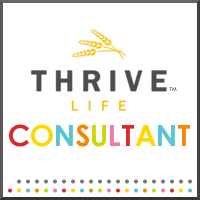As a Thrive Life consultant one of my major stumbling blocks
is taxes. How do I handle money and what
can I deduct. After a couple of years and
an excellent accountant, I have figured out a system that works for me.
Here is what I do:
- I use an Excel Spreadsheet to track my income and expenses all year. This auto calculates my income and expenses for the year.
- Each month I keep an envelope in my purse to keep receipts in. Then at the end of the month I enter all the info from the receipts into my Excel Spreadsheet.
- Then at the end of the year I look back through and add anything I missed.
- At tax time I take it all to my accountant.
Today I wanted to share the spreadsheet I use. It is kind of tricky to share an Excel
Spreadsheet online (at least it was tricky for me).
So
be sure to read the instructions.
·
- This spreadsheet is an Excel document. You must have Excel on your computer to make it work.
- This spreadsheet is shared using Google Drive, BUT before you can do anything with it you MUST download it to your computer.
- To download the Excel file click on this link. That will open the document in your web browser.
- Next click on the download arrow in the top right corner. This will open a window asking you if you want to open in Excel or save. Please select “Save File” the choose where you want to save it.
- To open the Excel document. Find it on your computer and click on it. You are now ready to record all of your info.
This excel file has a worksheet for each month. This is where you enter your data.
You can see those worksheets across the bottom of the window. They are labeled by month. Just click on the worksheet tab for January and enter all of the January information. It will then automatically add and show up on the totals page.
If you are looking for the link to the Excel Spreadsheet. Click HERE.
Here are a few things you might want to make sure you are
including:
·
Your consultant URL
·
Your consultant Q—ONLY if you use it to buy
things for your business. If you are
using it for personal use then it doesn’t count.
·
Convention Registrations and Expenses
·
Your consultant kit.
·
If you have a dedicated home office that is 100%
used for your business then you will need to keep track of monthly utilities,
home owners insurance as a portion of them may be able to be deducted. You will also need to know the square feet of
the home office.
I am NOT a tax professional please contact one if you have questions about your personal tax situation.



























